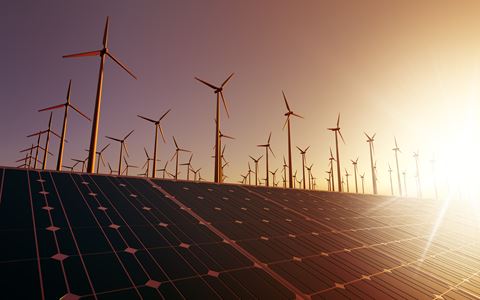The renewable energy industry was breathing a sigh of relief following the Australian Energy Market Commission’s (AEMC) decision to consider changes to transmission access rules as part of the overall redesign of the national electricity market (NEM).
The proposed transmission access model known as the Coordination of Generation and Transmission Investment (CoGATI) plan came under fierce criticism from the clean energy industry for being unnecessarily complex and likely to increase the cost of capital for future generation and storage investment.
The industry had feared the model would be presented at the COAG Energy Council meeting this Friday and rushed through. However, the network rule maker said the COGATI plan would now be integrated into the market design process being led by the Energy Security Board (ESB), which is expected to be finalized in 2025.
“Welcome move by the AEMC to have COGATI reforms … now proceed through the ESB’s market design process,” Clean Energy Council CEO Kane Thornton tweeted on Tuesday. “Investors will be relieved this isn’t being rushed and now part of comprehensive process.”
Proposed changes
Under the CoGATI plan, the network rule maker is looking to introduce locational pricing and transmission rights, which it believes will ensure that new renewable energy generators and storage projects can connect to the grid. However, major investors, energy companies and industry bodies see things differently.
While there is a pressing need for new rules and regulations that could facilitate investment, the clean energy industry was unanimous that the CoGATI plan was overly complex and uninvestable. “The introduction of Locational Marginal Pricing (LMP) and Financial Transmission Right (FTR) does not address long-term investment uncertainty and will increase the cost of capital for future generation and storage investment and reduce competition through increased barriers to entry,” said the Clean Energy Investment Group (CEIG), a group of 25 leading renewable energy investors, representing investments of more than 6.5 GW of installed capacity and a development pipeline in excess of 10 GW in Australia.
The LMP proposal incorporates dynamic regional pricing which, according to CEIG, would potentially increase the volatility of Marginal Loss Factors (MLFs) that already represent a major challenge for solar and wind proponents in Australia. “This is expected to result in an increase in the cost of capital for new generation investment and ultimately higher customer electricity prices,” reads the CEIG submission filed last year.
In a separate network rule process, the AEMC has ignored the plea of some of the biggest solar and wind project owners in Australia to change the way MLFs are calculated. While it acknowledged that transmission had failed to keep up the pace with renewable energy investment, the network rule maker rejected last month the clean energy industry’s proposal to move to Average Loss Factors (ALFs) and failed to come up with any suggestion on what should be done to increase certainty for investors.
At the COAG meeting in December, the AEMC was told to further consult with stakeholders on the CoGATI plan, while the clean energy industry remained adamant the model was likely to worsen the current investment collapse. In its latest decision, the AEMC said it would develop draft rules for LPM and FTR by the end of this year, and continue to work with stakeholders in order to contribute to the ESB’s NEM redesign package.
This content is protected by copyright and may not be reused. If you want to cooperate with us and would like to reuse some of our content, please contact: editors@pv-magazine.com.









By submitting this form you agree to pv magazine using your data for the purposes of publishing your comment.
Your personal data will only be disclosed or otherwise transmitted to third parties for the purposes of spam filtering or if this is necessary for technical maintenance of the website. Any other transfer to third parties will not take place unless this is justified on the basis of applicable data protection regulations or if pv magazine is legally obliged to do so.
You may revoke this consent at any time with effect for the future, in which case your personal data will be deleted immediately. Otherwise, your data will be deleted if pv magazine has processed your request or the purpose of data storage is fulfilled.
Further information on data privacy can be found in our Data Protection Policy.